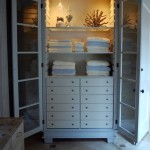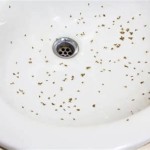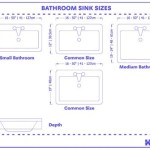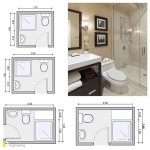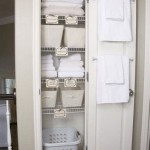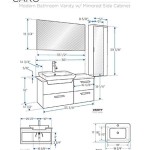How to Damp-Proof Your Bathroom: A Comprehensive Guide
Bathrooms, with their constant exposure to moisture and humidity, are particularly susceptible to dampness issues. Left unchecked, this can lead to mold growth, structural damage, and even health problems. Damp-proofing your bathroom is essential for maintaining a healthy and safe living environment. Here's a comprehensive guide on how to do it effectively:
1. Identify the Sources of Dampness: Before attempting any repairs, it's crucial to determine the root cause of the dampness. Common sources include:
- Leaking pipes or plumbing fixtures
- Poor ventilation
- Condensation from showers or baths
- Penetrating damp from outside the building
2. Address Ventilation Issues: Proper ventilation is key to preventing condensation and subsequent dampness. Install an extractor fan in the bathroom and ensure it runs during and after showers or baths. Regular airing of the bathroom also helps to remove excess moisture.
3. Repair Any Leaks: Inspect all plumbing fixtures and pipes for leaks. Address any leaks promptly to prevent water seepage and moisture build-up. If necessary, seek professional assistance from a plumber.
4. Use Damp-Proofing Coatings: Damp-proofing coatings provide a protective barrier against moisture penetration. Apply them to walls and floors in areas prone to dampness, such as around showers, baths, and sinks. Choose coatings specifically designed for bathrooms and ensure proper application.
5. Install a Tanking System: For more severe dampness issues, consider installing a tanking system. This involves applying multiple layers of a waterproof membrane to walls and floors, creating a seal against moisture. Tanking systems are highly effective but require professional installation.
6. Control Condensation: Condensation occurs when warm, moist air comes into contact with a cold surface. Minimize condensation by using a dehumidifier or opening windows to allow moisture to escape. You can also wipe down surfaces after bathing to remove excess water droplets.
7. Prevent Penetrating Damp: If dampness is originating from outside the building, it's essential to seal any cracks or gaps in external walls and around windows. Waterproofing render or masonry paint can also be used to protect the exterior from water penetration.
8. Maintain Cleanliness and Hygiene: Regular cleaning of the bathroom helps to prevent mold growth and dampness. Use mold-killing products and keep surfaces clean and dry. Clear drains regularly to prevent blockages that could lead to water pooling.
9. Seek Professional Advice: For complex dampness issues or if you are unsure about the cause, consult a qualified damp-proofing expert. They can assess the situation and recommend the most effective treatment options.
By following these steps, you can effectively damp-proof your bathroom and create a healthier, more comfortable living environment.

How To Stop Damp In Bathroom Expert Guide From Timberwise

How To Treat Damp Walls Before Painting Living By Homeserve

Damp Proof Paint Bathrooms Basement Cures And Prevents Dampness

Damp Proofing Old Bathroom By K L Property Services Refurbishment And Renovation

How To Stop Damp In Bathroom Expert Guide From Timberwise

How To Do Damp Proof Membrane F Ball F77 Dpm On Concrete Floor Water Liquid

What Is A Damp Proof Membrane And How Does It Work Timberwise

How To Cure Damp And Mould In The Bathroom

Dealing With Damp In Bathrooms

What Is A Damp Proof Injection How Does It Work
Related Posts
